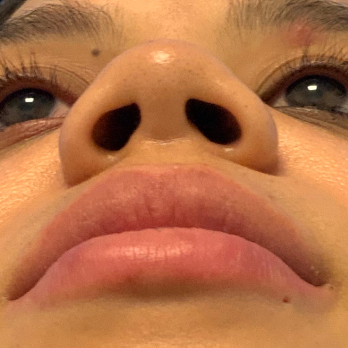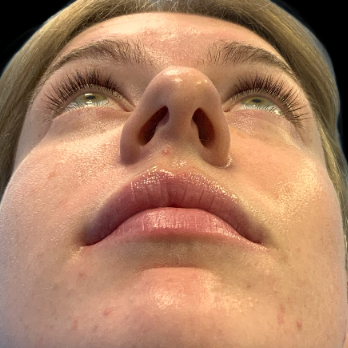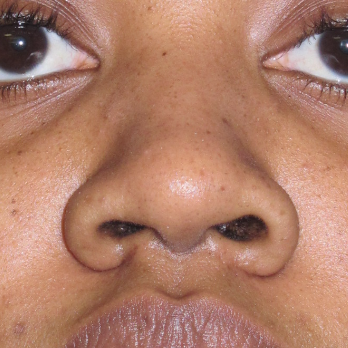
Nostril Reduction
Surgery for reducing nostril size
Nostril reduction is also called an alar base reduction or alarplasty. This can be performed as a stand alone procedure or combined with a rhinoplasty.
Rhinoplasty which involves reducing nostril size is most common in African or afro-Caribbean noses. However, it can be required in other ethnic types of nose and sometimes even in Caucasian noses. The commonest dislike is nostril flaring especially during smiling which makes the nose look excessively wide.
The surgery for reducing nostril size requires considerable experience since it involves scars which need to be carefully positioned in the furrows at the base of the nostril in order to keep them well hidden. The stitching needs to be meticulous and the judgement to assess how much the nostrils are to be reduced needs accurate assessment to keep a natural appearance after surgery.
You can read more about this surgery below and view photographs and videos of the procedure and the results.
How is nostril reduction surgery performed?
The procedure involves removing a piece of tissue at the base of the nostril rim.This can be performed in two ways depending on the existing anatomy and the desired result.
Alar base reduction
An alar base reduction is performed when there is alar flaring due to the excess lateral convexity and flar of the nostrils. In this situation a wedge is carefully removed at the base of the nostrils to reduce the flare of the nostrils. The amount of tissue removed needs to be in proportion to the rest of the nose and some maintainence of the natural curvature is important to avoid a straight junction with the lip since this will appear very unnatural. An example of this is shown in the photo below.
A Nostril sil reduction
A nostril sil reduction is performed when the floor of the nostril (i.e the nostril) is very wide . A reduction of the nostril sil reduces the overall width of the base of the lowermost nose by bringing the nostrils closer together. This is most commonly performed in Ethnic noses and Afro-Carribean noses.
A Combined Alar Base reduction and Nostril sil reduction
Occassionally both techniques need to be combined to reduce flaring as well as the overall width in very wide noses.


The picture above shows one nostril where tissue has been removed on one side and the other side has been marked prior to reduction. The picture below shows both nostrils reduced in size at the end of the surgery. The scars are carefully hidden at the base of the nostril and will hardly be seen when the stitches are removed.
What anaesthetic is required?
A general anaesthetic is usually required if the nostril reduction is performed as part of a rhinoplasty where other changes to the nose are required. However, if the nostril reduction is carried out on its own with no other changes to the nose it may be performed under local anaesthetic while you are awake.
What is the recovery ?
Very fine absorbable sutures are used and the stitch line heals within 2 weeks. During this time you may have some minor crusting on the stitch line but these will sponteaneously fall off and the stitches absorb by themselves. The procedure is not painful and all that is needed is very mild analgesia for a day or two. A check of the healing is carried out at 1 week and for the first two weeks after surgery it is important to abstain from exercise.
What are the scars like once healed ?
Once the fine stitches are removed a week after surgery the scars may be a little red but very quickly fade and blend into the crease at the base of the nostril. After two weeks it is possible to apply make up over the scars . After a few months the scars are barely noticeable. View the video below to see a close up of how the scars heal long term.
What are the benefits of nostril reduction surgery ?
The benefit of surgery is to achieve less flare and width to the nostrils with a more harmonious appearance to the rest of the nose. Some patients may be undergoing a full rhinoplasty at the same time and the nostril surgery simple serves to enhance the overall result of the surgery.










.JPG)
.JPG)
.JPG)

